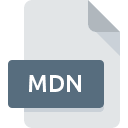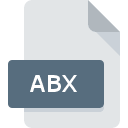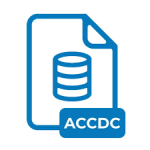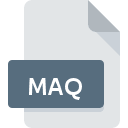.MDN File Extension

Blank Access Database Template
| Developer | N/A |
| Popularity | |
| Category | Database Files |
| Format | .MDN |
| Cross Platform | Update Soon |
What is an MDN file?
The .MDN file extension represents a Blank Access Database Template. These files are used primarily within Microsoft Access, a popular relational database management system (RDBMS) included in the Microsoft Office suite. An .MDN file contains the basic structure for a database, including tables, forms, queries, and reports, but no actual data.
More Information.
Microsoft Access was first released in 1992, and over the years, it has undergone numerous updates and improvements. The introduction of template files like .MDN allowed users to standardize database creation, making it easier to deploy databases that adhere to specific design patterns.
The initial purpose of .MDN files was to streamline the creation of new databases by providing a ready-made schema that users could build upon.
Origin Of This File.
The .MDN file format is specifically associated with Microsoft Access. It was developed by Microsoft to allow users to quickly create new databases with a predefined structure. These templates are particularly useful for setting up databases for common tasks or industries, ensuring consistency and saving time.
File Structure Technical Specification.
An .MDN file essentially contains a predefined database schema without any user-entered data. It includes:
- Tables: Definitions of tables and fields.
- Forms: Layouts for data entry and display.
- Queries: Predefined SQL queries for data retrieval.
- Reports: Templates for data presentation.
- Relationships: Links between different tables.
How to Convert the File?
Windows
To convert .MDN files on a Windows system, you can use Microsoft Access directly:
- Open the .MDN file in Microsoft Access:
- Launch Microsoft Access.
- Open the .MDN file by selecting “File” > “Open” and browsing to the file’s location.
- Export to a Different Format:
- Once the file is open, go to “File” > “Save As” or “Export”.
- Choose the desired format (e.g., .ACCDB, .MDB, .CSV, .SQL).
- Follow the prompts to complete the export process.
Linux
Since Microsoft Access is not natively available on Linux, you will need to use alternative methods:
- Using Wine:
- Install Wine, a compatibility layer to run Windows applications on Linux.
- Install Microsoft Access through Wine.
- Follow the Windows conversion steps above within the Wine environment.
- Virtual Machine:
- Set up a virtual machine using software like VirtualBox or VMware with a Windows OS.
- Install Microsoft Access on the virtual machine.
- Follow the Windows conversion steps above.
- Alternative Database Tools:
- Use a tool like LibreOffice Base to import the .MDN file (if possible) and then export to other formats. Note that compatibility may be limited.
macOS
As with Linux, Microsoft Access is not natively available on macOS. Use these methods:
- Using Parallels Desktop or VMware Fusion:
- Set up a Windows virtual machine using Parallels Desktop or VMware Fusion.
- Install Microsoft Access on the virtual machine.
- Follow the Windows conversion steps above.
- CrossOver:
- Install CrossOver, which allows you to run Windows applications on macOS.
- Install Microsoft Access through CrossOver.
- Follow the Windows conversion steps above.
- Alternative Database Tools:
- Import the .MDN file into FileMaker Pro or another database tool that can handle Access formats, then export to other formats.
Android
Direct conversion of .MDN files on Android is not feasible due to lack of support for Microsoft Access. Use these methods:
- Remote Desktop Applications:
- Use a remote desktop app (e.g., Microsoft Remote Desktop, TeamViewer) to connect to a Windows PC that has Microsoft Access installed.
- Perform the conversion on the remote PC.
- Third-Party Apps:
- There are third-party apps that claim to open Access files, but they typically only support data files (e.g., .ACCDB, .MDB), not templates.
iOS
Similar to Android, direct conversion on iOS is challenging. Consider these methods:
- Remote Desktop Applications:
- Use a remote desktop app to access a Windows PC with Microsoft Access installed.
- Convert the .MDN file on the remote PC.
- Third-Party Apps:
- Some apps might support viewing or basic interaction with Access data files, but comprehensive conversion tools are rare.
Other Platforms
For other platforms, the general approach involves accessing a Windows environment:
- Remote Desktop Solutions:
- Use remote desktop software to connect to a Windows machine with Microsoft Access installed.
- Perform the conversion on the Windows machine.
- Conversion Services:
- Use online conversion services (though these often only handle simpler formats and may not support .MDN files).
- Cloud Solutions:
- Use cloud-based virtual machines running Windows and Microsoft Access to perform the conversion.
Advantages And Disadvantages.
Advantages:
- Quick Setup: Allows rapid creation of new databases.
- Consistency: Ensures standardized database structures.
- Ease of Use: Simplifies database design for users who may not be familiar with database schema design.
Disadvantages:
- Limited Flexibility: Templates may not fit all use cases perfectly.
- Dependence on Microsoft Access: Only usable within the Microsoft Access environment.
- Potential for Over-Reliance: Users may become dependent on templates and not learn proper database design principles.
How to Open MDN?
Open In Windows
- Ensure Microsoft Access is installed.
- Double-click the .MDN file, or open Access and select “Open” from the menu, then browse to the file location.
Open In Linux
- Wine: To run Microsoft Access on Linux.
- Virtual Machine: Running a Windows VM with Access installed.
- Access Database Alternatives: Tools like LibreOffice Base can sometimes import Access files, but compatibility is limited.
Open In MAC
- Parallels Desktop or VMware Fusion: To run a Windows environment on macOS.
- CrossOver: To run Windows applications on macOS, including Access.
- Alternative Database Software: Importing Access templates into software like FileMaker Pro, although this requires conversion.
Open In Android
- Remote Desktop Applications: Connect to a Windows machine running Access.
- Third-Party Apps: Some apps claim to open Access files but usually only support data files (.ACCDB, .MDB) and not templates.
Open In IOS
- Remote Desktop Applications: Access a Windows PC remotely.
- Third-Party Apps: Limited support for Access databases, primarily data viewing.
Open in Others
For other operating systems or environments, the primary method involves using remote desktop solutions to access a Windows environment where Microsoft Access is installed.
Alternatively, converting the .MDN file to a more universally accepted format before opening it in other database management tools can be an effective strategy.













